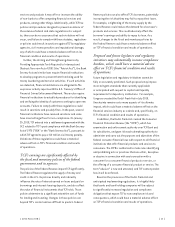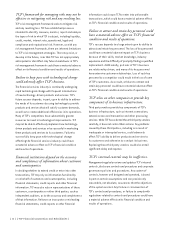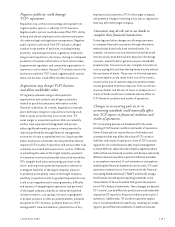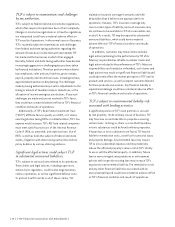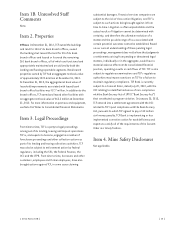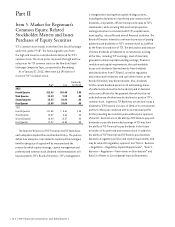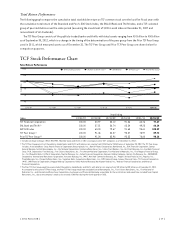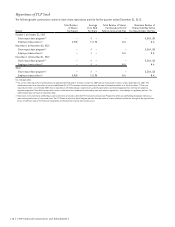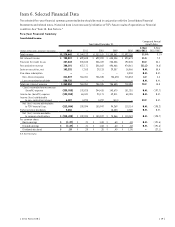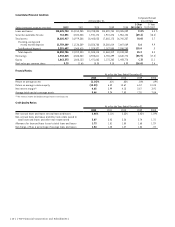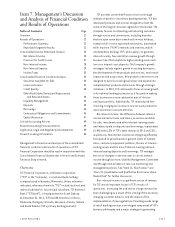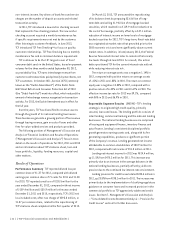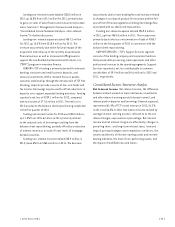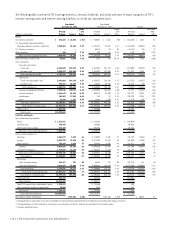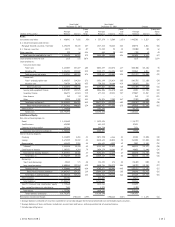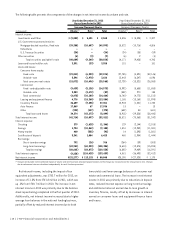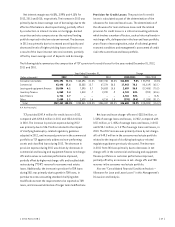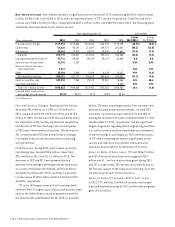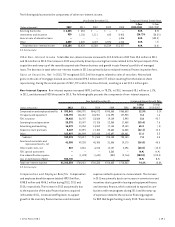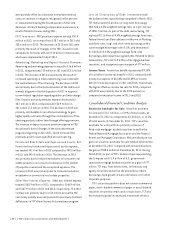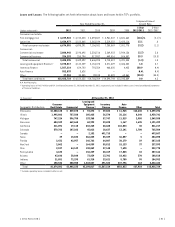TCF Bank 2012 Annual Report Download - page 37
Download and view the complete annual report
Please find page 37 of the 2012 TCF Bank annual report below. You can navigate through the pages in the report by either clicking on the pages listed below, or by using the keyword search tool below to find specific information within the annual report.Item 7. Management’s Discussion
and Analysis of Financial Condition
and Results of Operations
Table of Contents Page
Overview 21
Results of Operations 22
Performance Summary 22
Reportable Segment Results 22
Consolidated Income Statement Analysis 23
Net Interest Income 23
Provision for Credit Losses 27
Non-Interest Income 28
Non-Interest Expense 29
Income Taxes 30
Consolidated Financial Condition Analysis 30
Securities Available for Sale 30
Loans and Leases 31
Credit Quality 35
Other Real Estate Owned and Repossessed
and Returned Assets 44
Liquidity Management 45
Deposits 45
Borrowings 45
Contractual Obligations and Commitments 46
Capital Resources 47
Critical Accounting Policies 49
Recent Accounting Pronouncements 49
Legislative, Legal and Regulatory Developments 49
Forward-Looking Information 50
Management’s discussion and analysis of the consolidated
financial condition and results of operations of TCF
Financial Corporation should be read in conjunction with the
Consolidated Financial Statements in Item 8 and Selected
Financial Data in Item 6.
Overview
TCF Financial Corporation, a Delaware corporation
(“TCF” or the “Company), is a national bank holding
company based in Wayzata, Minnesota. Unless otherwise
indicated, references herein to “TCF” include its direct and
indirect subsidiaries. Its principal subsidiary, TCF National
Bank (“TCF Bank”), is headquartered in South Dakota.
At December 31, 2012, TCF had 428 branches in Illinois,
Minnesota, Michigan, Colorado, Wisconsin, Arizona, Indiana
and South Dakota (TCF’s primary banking markets).
TCF provides convenient financial services through
multiple channels in its primary banking markets. TCF has
developed products and services designed to meet the
needs of the largest consumer segments in the market. The
Company focuses on attracting and retaining customers
through service and convenience, including branches
that are open seven days a week and on most holidays,
extensive full-service supermarket branches, automated
teller machine (“ATM”) networks and internet, mobile
and telephone banking. TCF’s philosophy is to generate
interest income, fees and other revenue growth through
business lines that emphasize higher yielding assets and
low or no interest-cost deposits. The Company’s growth
strategies include organic growth in existing businesses,
the development of new products and services, new branch
expansion and acquisitions. New products and services are
designed to build on existing businesses and expand into
complementary products and services through strategic
initiatives. In 2012, TCF continued to focus on asset growth
in its national lending businesses as it focused on making
these businesses a more substantial part of its loan
and lease portfolio. Additionally, TCF reintroduced free
checking, bringing an increase in new account production
and a decrease in account attrition.
Net interest income, the difference between interest
income earned on loans and leases, securities available
for sale, investments and other interest-earning assets
and interest paid on deposits and borrowings, represented
61.4% and 61.2% of TCF’s total revenue in 2012 and 2011,
respectively. Net interest income can change significantly
from period to period based on general levels of interest
rates, customer prepayment patterns, the mix of interest-
earning assets and the mix of interest-bearing and non-
interest bearing deposits and borrowings. TCF manages
the risk of changes in interest rates on its net interest
income through an Asset/Liability Management Committee
and through related interest-rate risk monitoring and
management policies. See “Item 1A. Risk Factors” and
“Item 7A. Quantitative and Qualitative Disclosures about
Market Risk” for further discussion.
Non-interest income is a significant source of revenue
for TCF and an important factor in TCF’s results of
operations. Increasing fee and service charge revenue has
been challenging as a result of the slowing of the economy,
changing customer behavior and the impact of the
implementation of new regulations. Providing a wide range
of retail banking services is an integral component of TCF’s
business philosophy and a major strategy for generating
{ 2012 Form 10K } { 21 }


